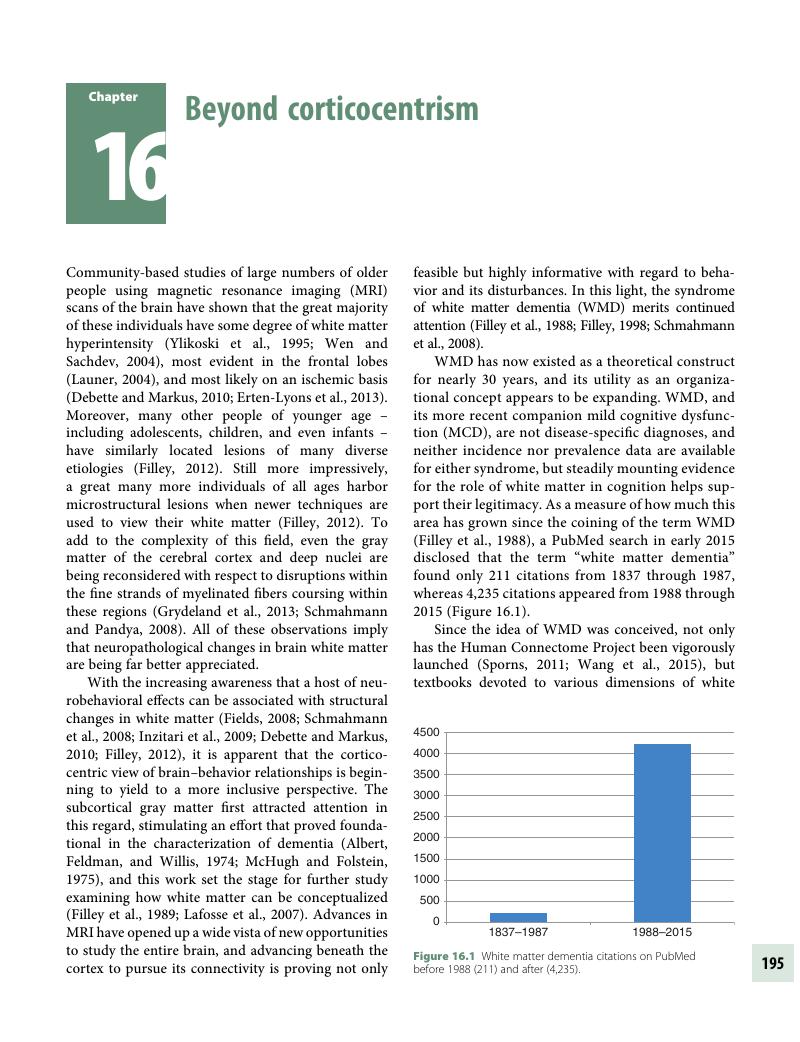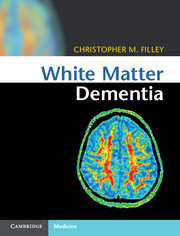Book contents
- White Matter Dementia
- White Matter Dementia
- Copyright page
- Dedication
- Contents
- Foreword
- Preface
- Chapter 1 Brain–behavior relationships: a reconsideration
- Chapter 2 Theessential contributions of neuroimaging
- Chapter 3 White matter neurobiology
- Chapter 4 Aneuroanatomic overview of dementia
- Chapter 5 Expanding the concept of dementia
- Chapter 6 White matter disorders
- Chapter 7 White matter dementia
- Chapter 8 Mild cognitive dysfunction: a precursor syndrome
- Chapter 9 Diagnosis
- Chapter 10 Prognosis
- Chapter 11 Treatment
- Chapter 12 White matter and cognition: research perspectives
- Chapter 13 Therapeutic innovations
- Chapter 14 Alzheimer’s Disease and white matter
- Chapter 15 Chronic traumatic encephalopathy and white matter
- Chapter 16 Beyond corticocentrism
- Index
- References
Chapter 16 - Beyond corticocentrism
Published online by Cambridge University Press: 05 May 2016
- White Matter Dementia
- White Matter Dementia
- Copyright page
- Dedication
- Contents
- Foreword
- Preface
- Chapter 1 Brain–behavior relationships: a reconsideration
- Chapter 2 Theessential contributions of neuroimaging
- Chapter 3 White matter neurobiology
- Chapter 4 Aneuroanatomic overview of dementia
- Chapter 5 Expanding the concept of dementia
- Chapter 6 White matter disorders
- Chapter 7 White matter dementia
- Chapter 8 Mild cognitive dysfunction: a precursor syndrome
- Chapter 9 Diagnosis
- Chapter 10 Prognosis
- Chapter 11 Treatment
- Chapter 12 White matter and cognition: research perspectives
- Chapter 13 Therapeutic innovations
- Chapter 14 Alzheimer’s Disease and white matter
- Chapter 15 Chronic traumatic encephalopathy and white matter
- Chapter 16 Beyond corticocentrism
- Index
- References
Summary

- Type
- Chapter
- Information
- White Matter Dementia , pp. 195 - 202Publisher: Cambridge University PressPrint publication year: 2016



